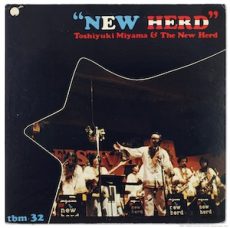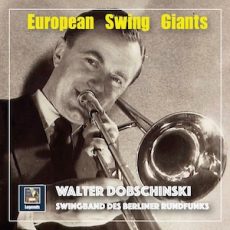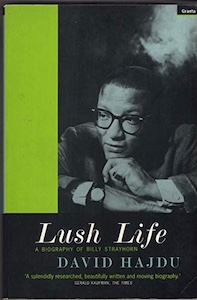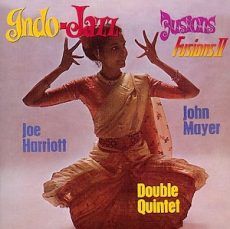
Daily Dose Of Jazz…
Toshiyuki Miyama was born on October 31, 1921 in Chiba, Japan. He played in a Japan Maritime Self-Defense Force band during World War II. After the war, he joined the Lucky Puppy Orchestra.
From 1950 he led his own ensemble, Jive Ace, however, eight years later the group expanded to big-band size and changed its name to the New Herd. The ensemble’s arranger was Kozaburo Yamaki.
New Herd recorded with Charles Mingus in 1971 and toured worldwide throughout the 1970s and 1980s. Miyama led the ensemble for more than fifty years, continuing to perform into the 2000s.
Clarinetist and bandleader Toshiyuki Miyama died on May 24, 2016 at 94 years.
More Posts: bandleader,clarinet,history,instrumental,jazz,music

Daily Dose Of Jazz…
Carolyn Lee Jones was born on October 30, 1950 in Nebraska to parents who were musicians. Always wanting to be a singer, her musical journey began as a child while growing up in Nebraska. During her formative years she sang in her school choirs and studied voice. After graduation, the lure of the big city drew her to Dallas, Texas where she was a retailer for luxury stores. While traveling as a buyer she sought music opportunities.
By 2008 Carolyn had changed direction and pursued music full time as a vocalist and bandleader. That year she recorded her debut release Bon Appetit! In New York City, in which she sings a duet with guest Bob Dorough.
Over the next thirteen years she recorded four more albums, while performing publicly and privately with her group, Fresh Vintage Jazz Ensemble & The Satin Dolls Band. Vocalist Carolyn Lee Jones continues to perform and tour.More Posts: bandleader,history,instrumental,jazz,music,vocal

Daily Dose Of Jazz…
Walter Dobschinski was born Dobrzynski on October 29, 1908 in Berlin, Germany. He received formal musical training on piano at the Berlin Conservatory, but concentrated on trombone once he became interested in jazz.
For most of the 1930s he played with Teddy Stauffer, including tours of western Europe and on the ship SS Reliance. In 1939 he worked with Kurt Hohenberger, and was involved with the German Dance and Entertainment Orchestra during World War II. Following the war, he led a swing jazz ensemble for Berliner Rundfunk, recording extensively with this group with Rex Stewart appearing on some of these recordings. He continued leading ensembles in the 1950s.
Trombonist and bandleader Walter Dobschinski, who in his later career concentrated on arranging and composition, died on February 16, 1996 in Berlin.
More Posts: arranger,bandleader,history,instrumental,jazz,music,trombone

On The Bookshelf
Lush Life: A Biography Of Billy Strayhorn
Billy Strayhorn, one of the greatest composers in the history of American music, the creator of a body of work of standards like Take the A Train. Yet, as a composer with no stage presence many see him as overshadowed by his friend and collaborator Duke Ellington, with whom he worked with for the two and a half decades.
The songwriter and arranger was an integral component of the Harlem Renaissance and the evolution of jazz. Lush Life is a vibrant and absorbing account of the Strayhorn’s life and the times that other jazz musicians led in Harlem and Paris. While composing some of the most gorgeous American music of this century, Strayhorn labored under a complex agreement whereby Ellington took the bows for his work.
Fifty-one years from the date of his birth, Billy Strayhorn transitioned due to cancer and alcohol abuse. The small, shy black composer carried himself with singular style and grace as one of the few jazzmen to be openly homosexual. This biography has sparked an enthusiastic revival of interest in Billy Strayhorn’s work and is already acknowledged as a jazz classic.
Lush Life: 1996 | David Hajdu
Granta Publications

Daily Dose Of Jazz…
John Henry Basil Mayer was born on October 28, 1930 in Calcutta, Bengal, British India, to an Anglo-Indian father and Tamil mother. After studying with Phillipe Sandre in Calcutta and Melhi Mehta in Bombay, he won a scholarship to London’s Royal Academy of Music in 1952, where he studied composition with Matyas Seiber, as well as comparative music and religion in eastern and western cultures.
He worked for five years as a violinist with the London Philharmonic Orchestra beginning in 1953 and then with the Royal Philharmonic Orchestra from 1958 to 1965. During that period John was also composing fusions of Hindustani classical and Western classical forms fused with jazz undertones. His Violin Sonata was performed by Yehudi Menuhin and his Shanta Quintet was recorded by jazz sitarist Diwan Motihar and Denis Preston’s Lansdowne String Quartet in 1967.
In the 1960s he worked extensively with the Jamaican-born jazz musician Joe Harriott, with whom he formed the group Indo-Jazz Fusions. John also composed for film, and the BBC quiz show Ask the Family. From 1989 onwards he taught composition at Birmingham Conservatoire where he introduced the BMus Indian music course in 1997. He continued to compose concert works for chamber, solo and orchestral projects and record jazz-fusion albums.
Composer and sitarist John Mayer, known primarily for his fusions of jazz with Indian music, was fatally injured when hit by a motorist in North London and died on March 9, 2004.
More Posts: bandleader,composer,history,instrumental,jazz,music,sitar


